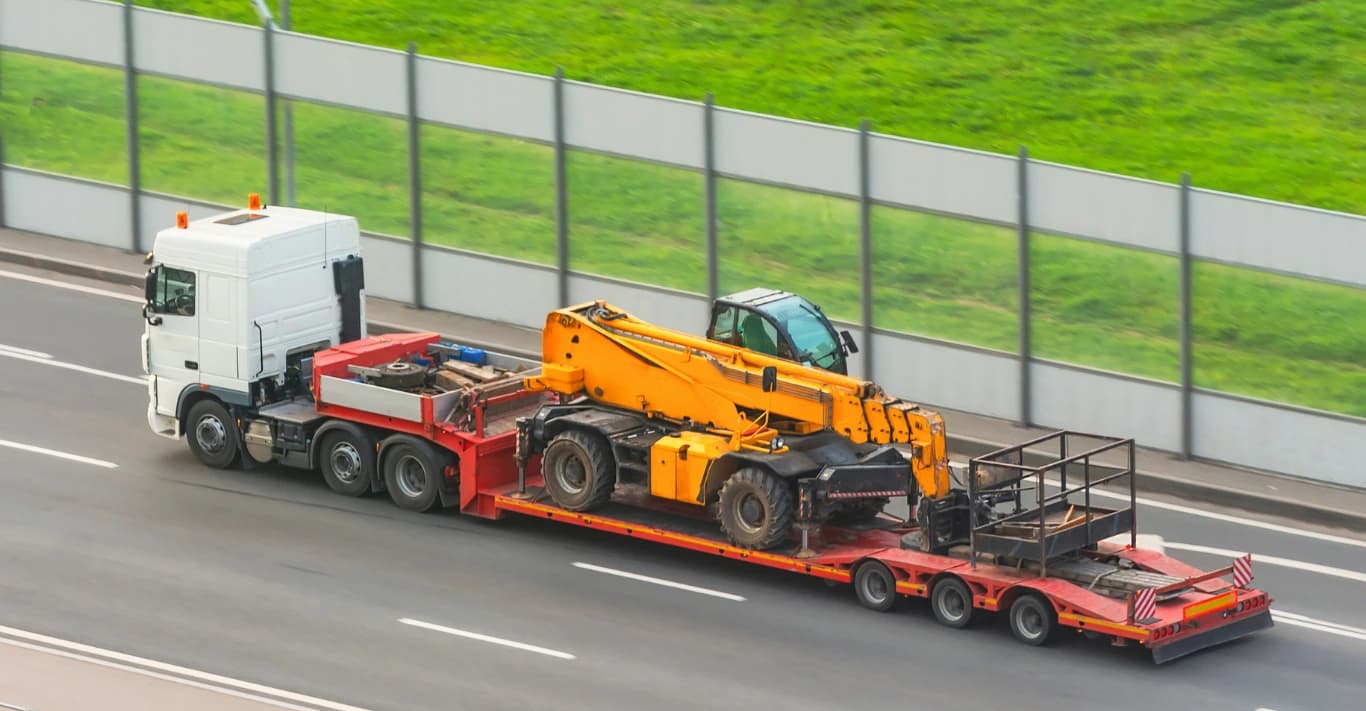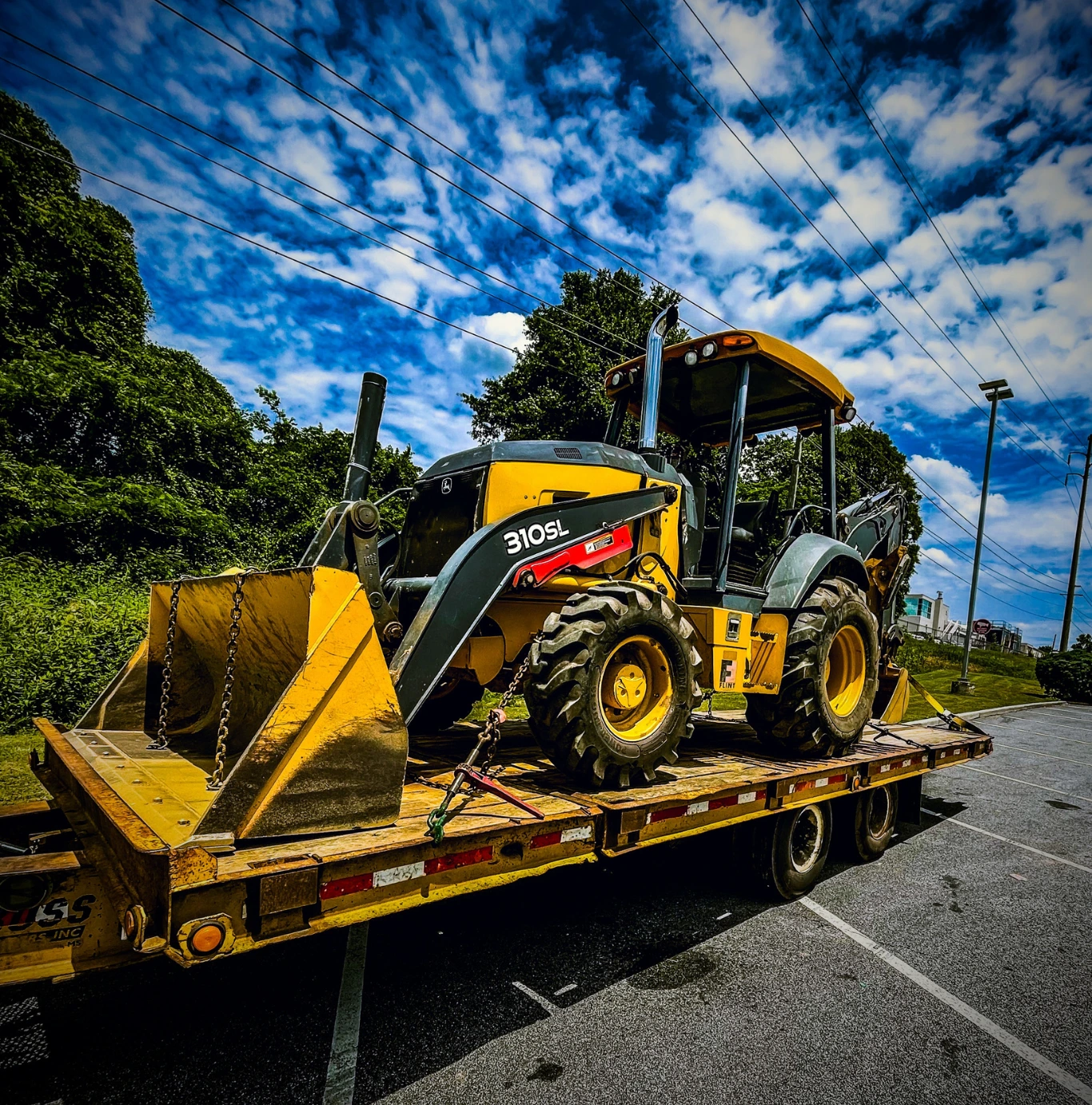
Nationwide Heavy Equipment Shipping
Rapid Auto Shipping specializes in oversized vehicle transport and heavy equipment shipping, providing stress-free transportation of large machinery and trucks of any size to any destination. We deliver superior service at affordable prices, supported by a nationwide team of professional drivers eager to transport your equipment safely and efficiently.
Heavy Equipment & Oversized Vehicle Shipping
Heavy equipment is specialized, and large machinery is employed in the construction, agriculture, and transport industries. This includes cranes, bulldozers, excavators, UTV, forklifts, and large vehicles like buses, tractors, commercial vehicles, articulated vehicles, lowboys, and food trucks. As these machines are essential to different operations but cannot always be driven long distances, effective heavy equipment shipping is important.
We transport movable equipment and oversized vehicles (not general freight or non-motorized loads). If you need to move construction machinery, farm equipment, or commercial trucks, our professional heavy equipment transporters deliver them safely and efficiently. With specialized trailers and national coverage, we provide oversized vehicle transport that is convenient and effortless.

Cost To Ship Heavy Vehicle?
Heavy equipment shipping and oversized vehicle transport cost depends on a number of factors such as the shipment's size, transportation distance, and mode of shipping. The average cost of shipping a heavy vehicle is between $1.75 and $5 per mile, depending on the transport specs. Local transport is usually more expensive per mile, whereas longer distances provide reduced rates.
To obtain the correct quote for shipping heavy equipment, you should get our free customized quote. We have clear and upfront pricing and tailored shipping solutions to provide the best service at affordable prices.
Factors Affecting The Cost Of Shipping Heavy Equipment And Oversized Vehicles
A number of significant elements determine the total cost of shipping heavy equipment:
Truck Size and Weight
Heavier and bigger vehicles need specialized trailers, extra permits, and even escort vehicles, all of which increase the cost of shipping. For instance, bulldozers and articulated trucks need lowboy trailers, while step deck trailers suit forklifts and UTVs.
Transport Distance
The longer your equipment must travel, the more fuel, time, and logistics factor into it. Short-distance shipping costs up to $5 a mile, whereas cross-country shipping averages $1.75 a mile.
Shipping Route & Accessibility
Very busy routes are less expensive because there is constant transport activity. If your heavy vehicle transport involves driving through remote or challenging terrain, though, costs can be higher because of added logistical complexity.
Type of Transport Service
Permits and Regulations
Special permits are usually needed for oversized loads, particularly when traveling across state lines. Escort vehicles may be required in some instances, adding to the expense.
Insurance Coverage
Standard insurance is usually provided, but for heavy machinery of high value, extra insurance is advisable, which increases the overall price.
Urgency and Expedited Shipping
If you require your equipment to be shipped in a hurry, expedited services will be more expensive. Flexible scheduling with standard shipments keeps costs low.
Why Choose Us For Large Vehicle Hauling?
For heavy hauling and oversized vehicle transport, selecting a company that is dependable ensures a smooth, safe, and affordable experience. We focus on heavy auto shipping and large vehicle transportation, ensuring your equipment arrives safely and on time. Here's why we're the best option:
Heavy Equipment Shipping Expertise
We have a long history of heavy hauling, moving a variety of vehicles such as bulldozers, articulated trucks, lowboy trailers, UTVs, forklifts, food trucks, buses, and others. Our drivers are trained to move oversized and specialty vehicles with the utmost care and precision.
Nationwide Oversized Vehicle Transport
We provide large vehicle transportation services in all 50 states. No matter if you require a flatbed, step deck, or RGN trailer, we provide the appropriate equipment to transport your heavy vehicle safely over any mile.
Reasonable Pricing & Clear Quotes
Our competitively priced heavy auto shipping services come without any hidden fees. We calculate our rates according to distance, vehicle size, permits, and shipping routes so you can expect an honest and reasonable quote for your oversized trucking services.
Licensed, Bonded & Fully Insured
Your heavy machine is worth a lot; we do not take its safety lightly. We are a fully licensed and insured company, offering extended coverage for high-value shipments to provide you peace of mind.
24/7 Customer Support & Transparent Communication
We provide shipment tracking and 24/7 customer support to keep you in the loop at every turn. Our logistics staff will answer your questions and keep you posted from pickup to delivery.
Safe, On-Time Delivery You Can Trust
We employ skilled heavy hauling drivers and have a well-fitted transport fleet to ensure safe and on-time deliveries. Our staff operates under strict safety measures to ensure your large vehicle is safe in transit.
Easy Scheduling & Door to Door Service
We offer convenient shipping service, such as door to door oversized auto transport and accommodating scheduling to suit your needs. Whether you need regular or expedited shipping, we tailor our services to provide maximum convenience.
Tips And Things To Know About Heavy Auto Shipping
Shipping heavy equipment and oversized trucks involves planning in detail to make it a smooth and problem-free experience. Whether you are shipping bulldozers, articulated trucks, buses, or food trucks, knowing the main things about heavy auto shipping will prevent delays and surprise expenses. Below are some tips and things to note:
Know the Cost Factors
The price of large vehicle transport varies based on factors such as:
Prepare Your Equipment for Transport
To have a successful and safe shipping experience, use these prep steps:
Select the Appropriate Trailer for Your Heavy Auto Shipping
The trailer type depends on your transport requirement and vehicle size:
Be Aware of Permit and Regulatory Requirements
States also have certain regulations pertaining to oversized vehicle transport, i.e.:
Understand the Estimated Delivery Time
The time taken in the shipping of heavy autos varies with considerations like:
Work With a Trusted Heavy Equipment Transport Provider
For secure, trustworthy, and affordable heavy hauling, it's essential to use the services of an experienced shipping company such as Rapid Auto Shipping. We take care of everything from permits to scheduling and make your large vehicle shipping hassle-free.
Heavy Hauling Across The Country
All 50 States
Nationwide coverage for your heavy hauling needs
Specialized Trailers
Flatbeds, lowboys, step decks, and RGN trailers
Professional Drivers
Experienced team for complex shipments
Oversized vehicle transport and heavy equipment shipping take expertise, an appropriate trailer, and precise planning. We provide heavy hauling services in all 50 states, getting your equipment to its destination safely and efficiently.
From moving construction equipment, farm vehicles, or commercial trucks, we have the specialized trailers and professional drivers to manage even the most intricate shipments.
Our staff oversees the entire process, from route calculation and obtaining the required permits to safe loading, transportation, and timely delivery. Having access to flatbeds, lowboys, step decks, and RGN trailers, we guarantee your shipment is hauled safely regardless of its size and weight.
For reliable heavy auto shipping, trust our experts to get the job done right.

0 Yr
In the business
0K
Quotes
0K
Vehicles Shipped
0.0/5
Overall Rating
Let’s Get Started Safe & Reliable Heavy Equipment Shipping
Oversized vehicle transport and heavy equipment shipping isn't merely transporting them from point A to point B; it requires experience, precision, and accurate logistics planning. At Rapid Auto Shipping, we do it all for you, from choosing the right trailer to arranging permits and ensuring hassle-free transit.
With our extensive nationwide transportation network, skilled staff, and safety as our priority, you can rely on us to deliver your cargo on time and in top condition.
Call us today at +1 (833) 233-4447 to get a free quote! Let us assist your large vehicle transportation with ease and professionalism.

Everything you need to know about our auto transport services
Yes, oversized vehicle transport requires permits depending on the size and weight of the load. Our team handles all state and federal permit requirements, ensuring compliance with transportation laws.
Shipping times depend on distance, route conditions, and permit approvals. Local deliveries: 1 to 3 days, Cross-country transport: 5 to 10 days, Complex oversized loads: May require extra time for permits and escorts.
Yes! All shipments are covered by comprehensive cargo insurance. Additional insurance options are available for high-value equipment if needed.
You can request a free, no-obligation quote by calling +1 (833) 233-4447 or filling out our online form. Our team will provide a detailed estimate based on your specific transport needs.
It depends on the type of equipment being shipped. If your machinery is self-propelled, an RGN trailer allows for easy loading and unloading. A forklift or crane may be required for stationary equipment. We'll work with you to ensure all logistics are arranged.
Yes! We offer expedited heavy equipment shipping for urgent requests. If you need same-day or next-day pickup, contact us at +1 (833) 233-4447 to check availability.